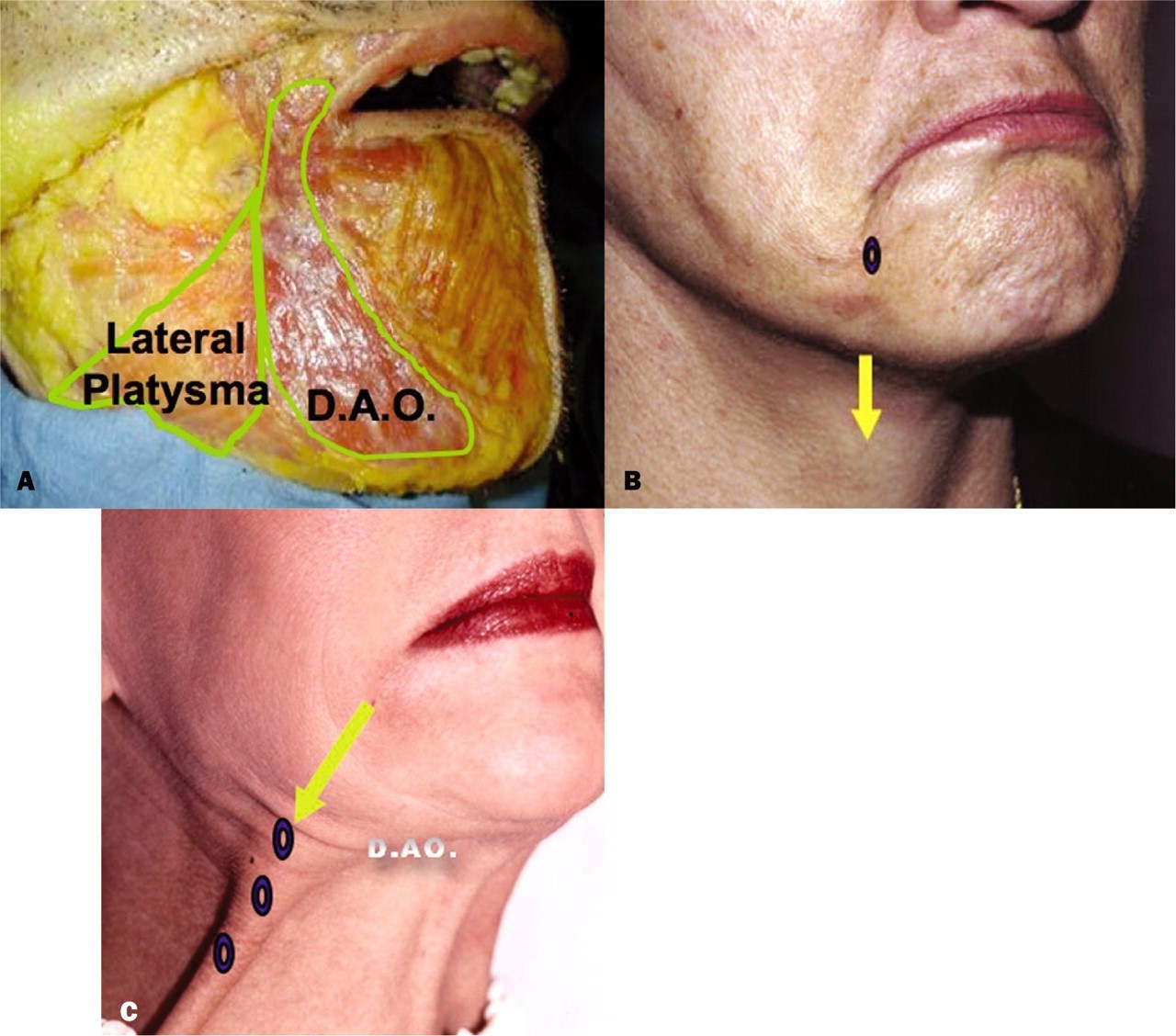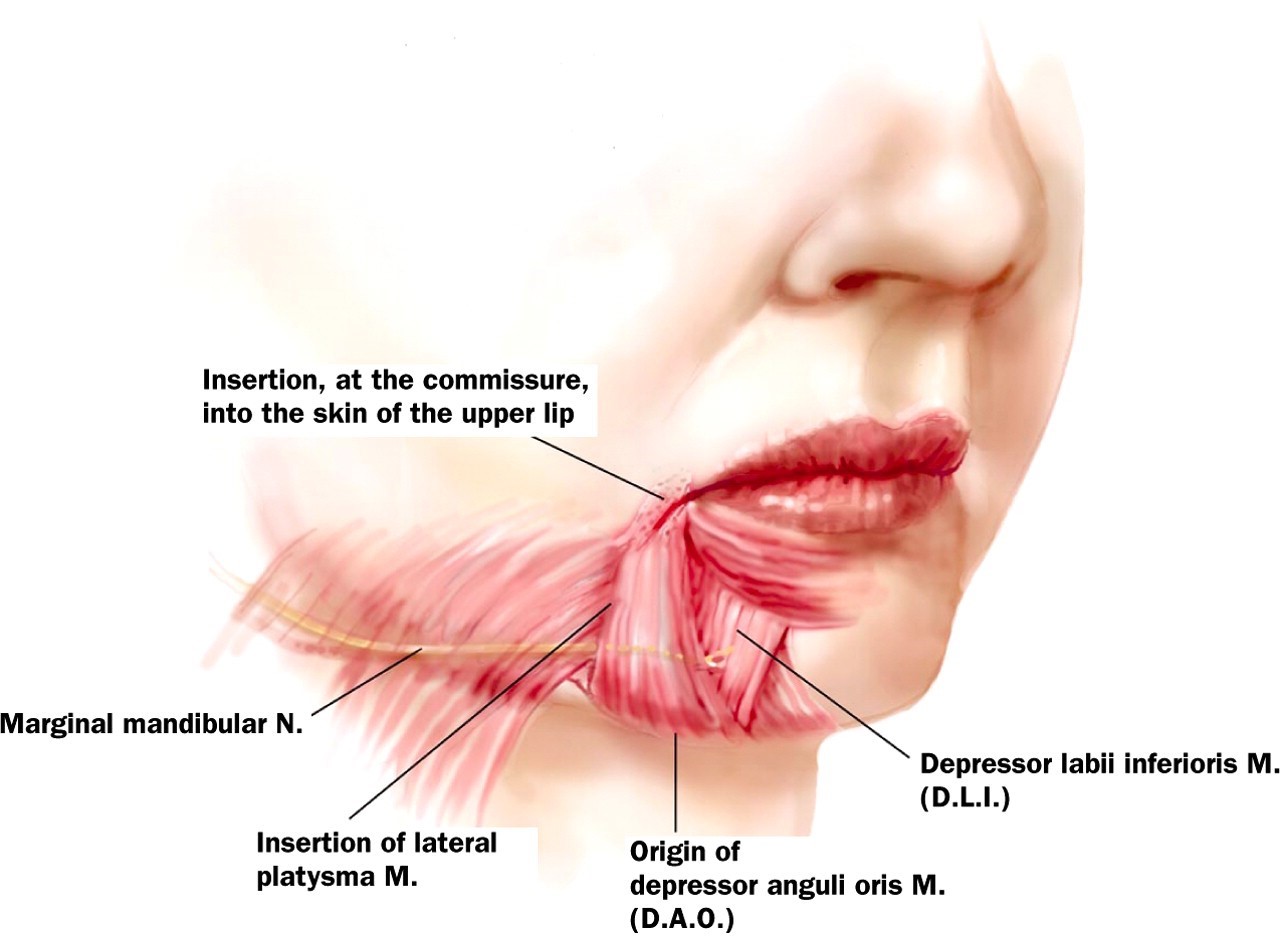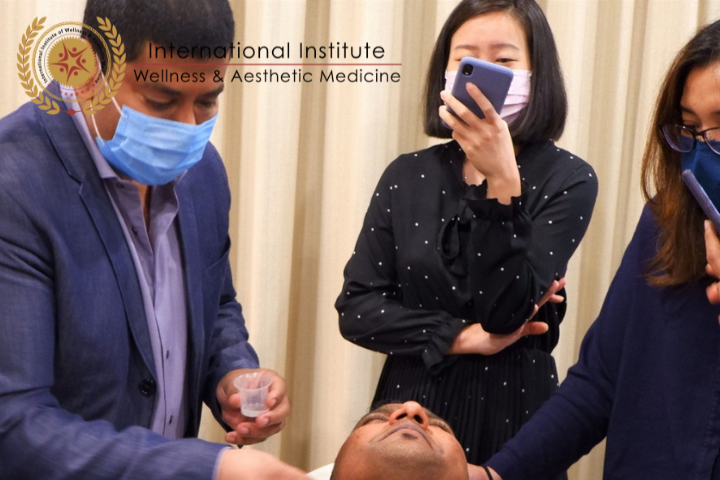Treatment of Marionette Fold with Botulinum Toxin
In today’s article, Prof Dr Morthy, the Course Director of International Institute of Wellness & Aesthetic Medicine will discuss on how to treat Marionette Lines with Botulinum.
Skin and structural aging are significant components of the aging face. Structural aging is characterised by the hollowing of paramedian folds (ie, tear trough, nasolabial grooves), resulting from movement of the fatty volumes. For a long time, gravity was considered to be the main cause of structural aging. However, recent clinical studies demonstrate that structural aging is primarily due to the repeated contraction of certain mimetic muscles of the face. Accordingly, gravity has only a secondary effect on tissues that are already damaged by movement of the mimetic muscles. Over time, the mimetic muscles shorten and change from a curved to a rectilinear shape. Consequently, the deep fat lying beneath the muscle is expelled and pushed toward the superficial fat.
Stages in Peribuccal Rejuvenation
The application of the facial aging to the depressor anguli oris (DAO) has given rise to a new 4-stage strategy for rejuvenation of the peribuccal region:
-
Prevention Stage (Botulinum Toxin Recurve): In patients aged 20 through 25 years, botulinum toxin is injected to prevent muscular shortening and fatty transfer.
-
Aging Stage 1 (Botulinum Toxin-Filler Recurve): In patients aged 30 through 35 years, the early stages of aging are treated by injecting botulinum toxin into the DAO to block its contraction force, as well as using dermal fillers to fill the buccal commissure, vermillion line of the upper and lower lips, marionette fold, and mandibular rim in front of the marionette fold with hyaluronic acid.
-
Aging Stage 2 (Face Recurve): In patients aged 40 through 45 years, treatment involves sectioning the DAO (if necessary) under local anaesthesia, along with the lateral platysma (LP) muscle. Fat is suctioned from the jowl and then reinjected into the marionette fold.
-
Aging Stage 3 (Face Recurve Lift): In patients 50 years and older, treatment includes a cutaneous lift combined with age marker fascicles sectioning and fat transfer.
Anatomic Considerations
It is important to distinguish between the action of the Depressor Anguli Oris (DAO) at the corner of the mouth (which produces the vertical traction) and that of the Lateral fibres of Platysma (LP) (which produces the rear oblique traction). The fatty transfer toward the jowl during the contraction of the DAO and LP is complemented by the associated contraction of the mentalis or the depressor labii inferioris (DLI). Because of the support offered by the bone, the deep fat is transferred towards the superficial fat and contributes to jowl formation. Experience has shown that frequently the blocking of the DAO is compensated for by the contraction of the LP.

Where to inject Botulinum Toxin for DAO
Botulinum toxin must be injected as close as possible to the motor endplate of the muscle, since an injection performed at a distance of 5 mm away from the site of innervation is considered to be 50% less effective than an injection performed close to the motor endplate itself. The motor innervation of the DAO muscle comes from the marginalis mandibular nerve, and the motor innervation for the LP comes from the cervical branch of the facial nerve. The DAO has one motor endplate3 located at mid-muscle height in the marionette fold.
The DAO muscle starts on the linea obliqua mandibulae and ends in the skin of the upper lip commissure. The LP starts on the skin at the clavicle level and ends in the modiulus. Of utmost concern is avoiding injury to the marginalis mandibulae nerve, which is also responsible for the innervation of the DLI. The projected course of this nerve branch is along the lower half of the DAO. The marginalis mandibulae nerve passes posterior to the platysma and the DAO, but anterior to the DLI.

Botulinum Toxin Injections
Botox, Dysport or Xeomin Injections must be superficial in the subcutaneous fatty tissue at mid-muscle height. This makes it possible to avoid any effect on the buccinator muscle, which lies against the mucosa. It is also important to have the needle pointed laterally and not medially toward the DLI. This will minimize chance of diffusion onto the DLI.
To block the maximum contraction force of the DAO, we inject 2 to 4 units of Botox or Xeomin into the superficial fat overlying the DAO muscle, at mid muscle height, with the needle pointed laterally. For Dysport, it will equal to 5 to 10 units. The procedure should only be performed by a trained Aesthetic practitioner with a sound understanding of adipose tissue and the patient’s overall physiology and anatomy.
Botulinum Toxin Injection Training
It is prudent that all Aesthetic practitioners undergo proper training in Aesthetic Medicine. The practitioner must balance between benefits & risks of the Aesthetic procedure and steps to mitigate complications if it occurs. Some of the topics that are covered in Botulinum Toxin Injection Training under the best Botox Classes Online includes:
-
Facial anatomy & facial muscles for Botulinum Toxin
-
Types of Botulinum Toxin used in Aesthetic Medicine
-
Concentration & dilutions for Botulinum Toxin
-
Botulinum Toxin injection techniques
-
Adverse effects & complications of Botulinum Toxin
-
Managing Botulinum Toxin complications
Enquire today for Botulinum Toxin Injection Training at IIWAM
About IIWAM Aesthetic Education
International Institute of Wellness & Aesthetic Medicine (https://www.iiwam.ac/education) is a private teaching institution that provides International Aesthetic Medical Certification programs for Doctors, Dentists, Nurses, Aestheticians, and Spa Owners. Prof Dr Morthy, the course director for the Institute, is a key opinion leader for Aesthetic Medicine in the region, and a trainer for several teaching institutions.
The International Institute of Wellness & Aesthetic Medicine (IIWAM) has academic affiliations with several countries, including Malaysia, Korea, Thailand, Philippines, Myanmar, Cambodia, India and Indonesia. With our insignia of “Be Certified & Be Recognized”, the Institute develops knowledgeable, skilled, and confident aesthetic practitioners of international repute.
IIWAM is the only Institute to have its Programs certified by City & Guilds of London, CPD Standards Office (UK) and European International University (Paris). IIWAM is also a registered CPD Training provider for Malaysian Medical Association.
IIWAM also offers Cosmetic Procedures and Stem Cell treatment at IIWAM Wellness Centre (https://www.iiwam.ac/wellness) that are safe, effective, and affordable.

